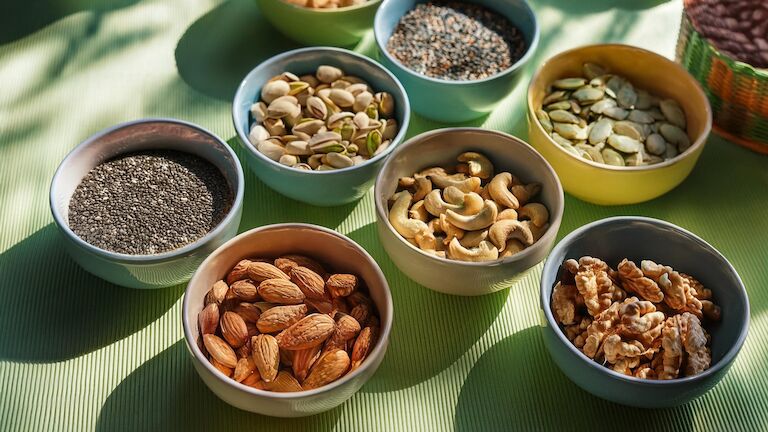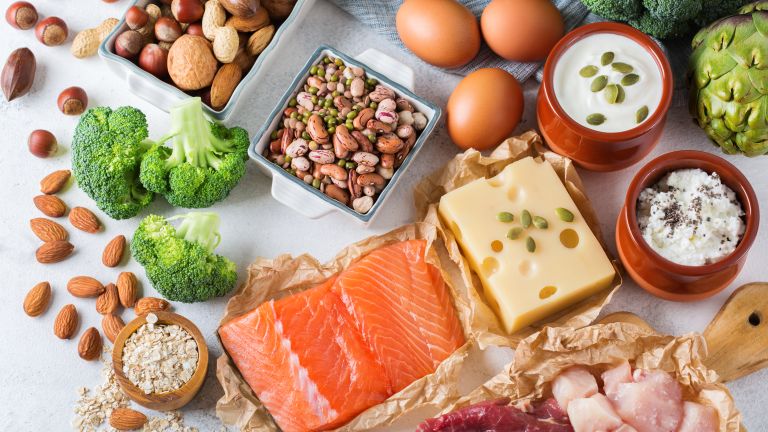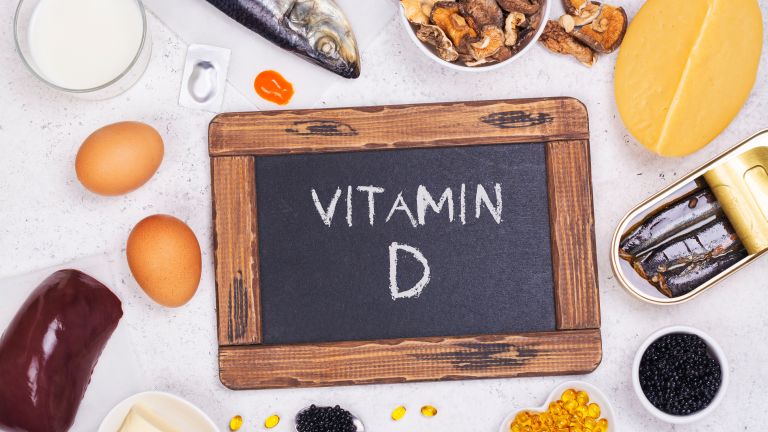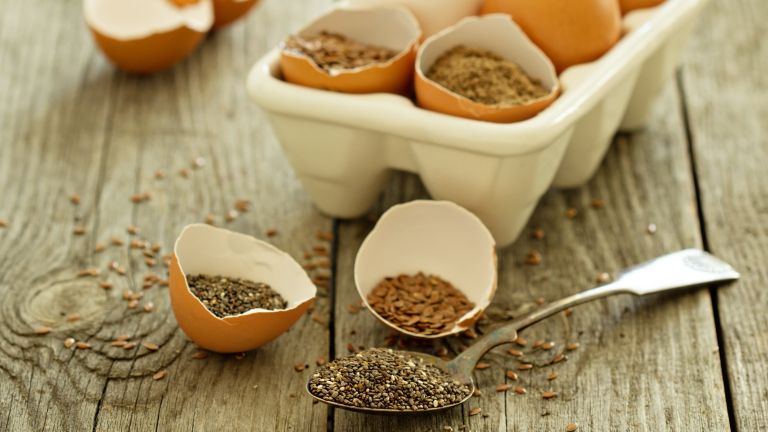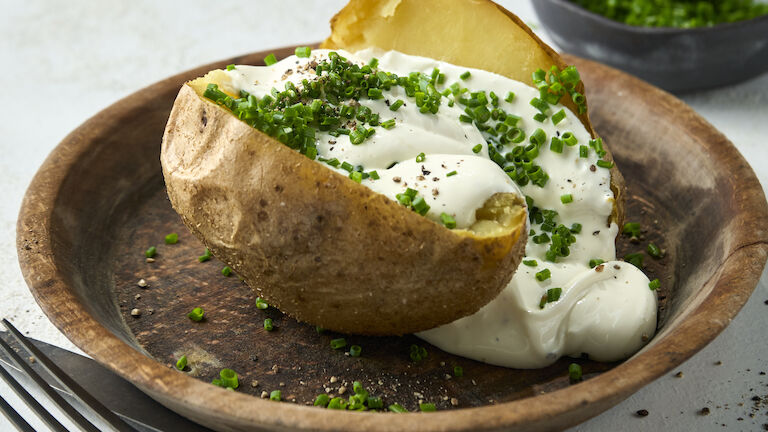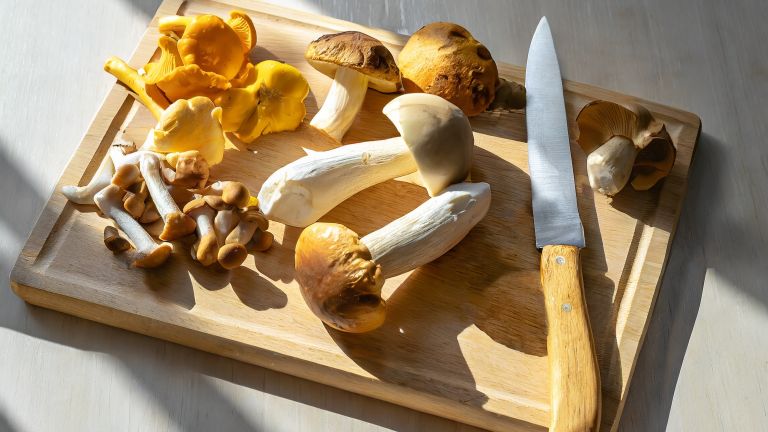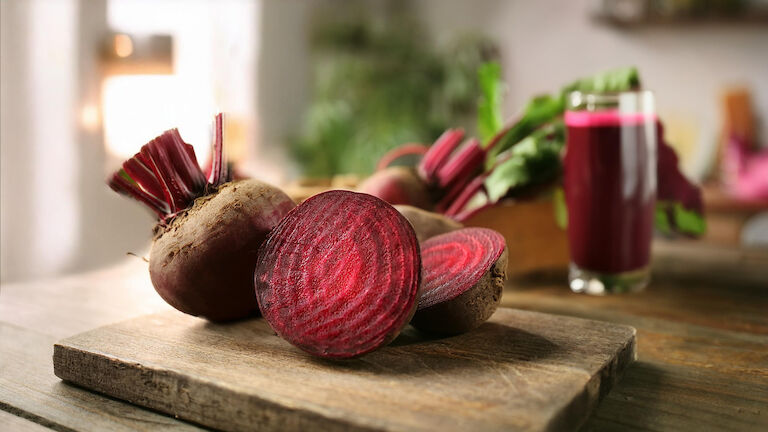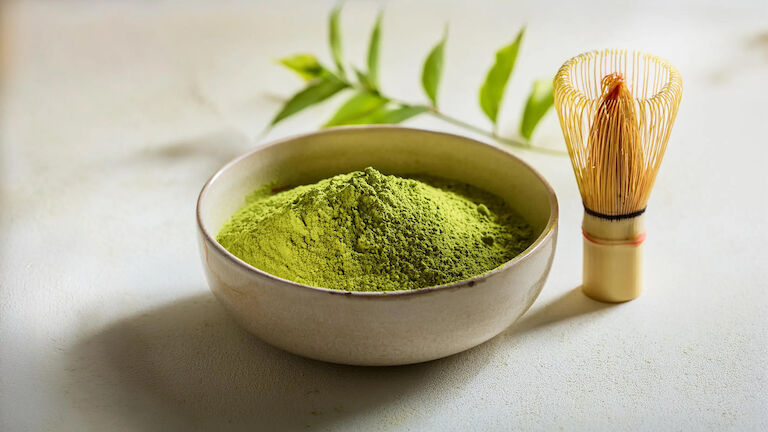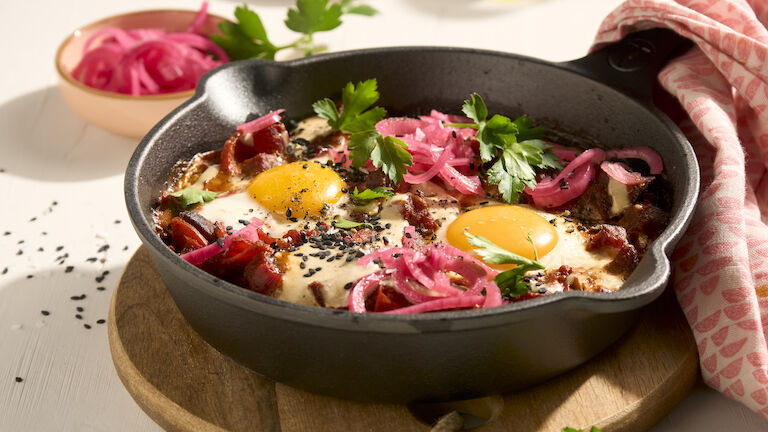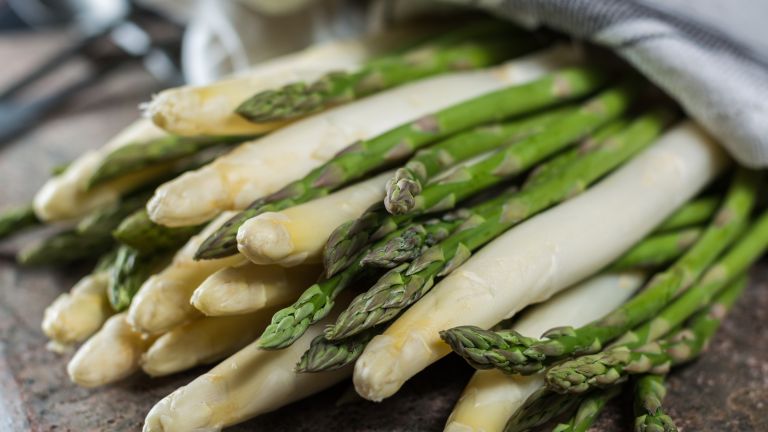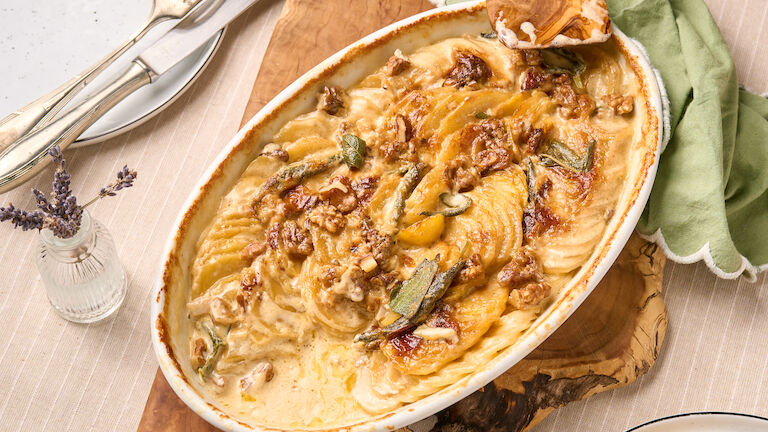Fibre: The underrated hero in your diet
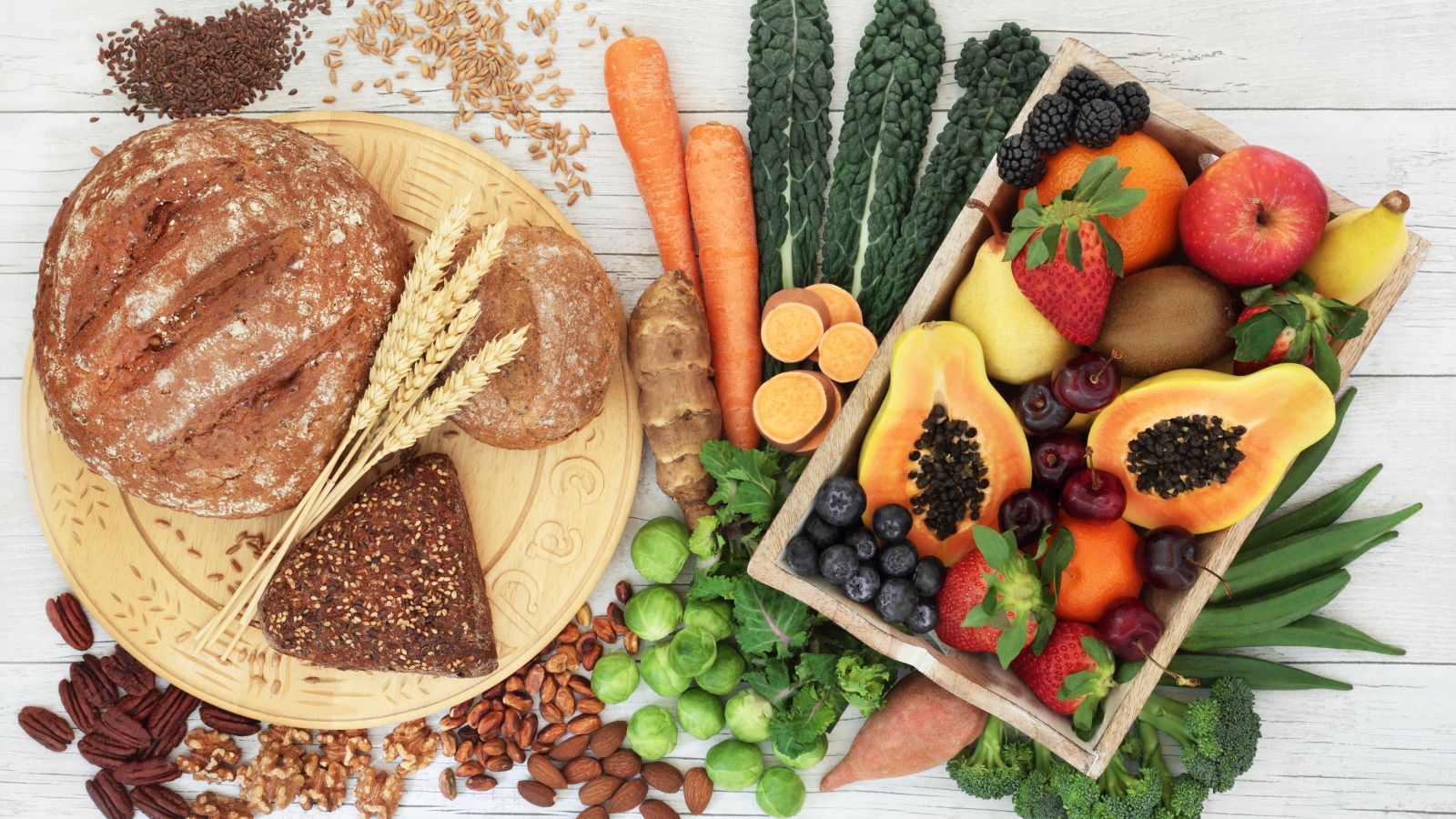
Fibre is frequently underestimated but in terms of healthy eating it is a heavyweight hero and belongs in every meal plan. In this article, we will learn all about this digestive wonder, which helps to protect against various diseases, and how to get a plentiful supply.
At a glance
- What exactly is fibre?
- What types of fibre are there?
- Health benefits
- Recommended intake
- Can too much fibre be harmful?
- High-fibre foods
- Practical tips including nutritional plans with recipes
Let’s be honest: compared to vitamins and minerals, fibre is something of an underdog when it comes to healthy eating. This is already evident from the amounts consumed in Germany, where the recommended daily intake of at least 30 g is rarely met. According to the National Food Consumption Study II, the average daily consumption of dietary fibre is 23 g among women and 25 g among men. (1) That leaves room for improvement!
What exactly is fibre?
Fibre entails indigestible food components that are found almost exclusively in plant-based foods. They cannot be completely broken down by the enzymes in the small intestine of the human body and thus reach the large intestine in undigested or only partially digested form. (2)
Fun fact: Formerly known as roughage or bulk, dietary fibre was named for its indigestible nature, to which no particular significance was attributed in the past. On the contrary, it was assumed that fibre merely adds bulk to the body.
What types of fibre are there?
Most dietary fibre is composed of indigestible carbohydrates (e.g. cellulose, hemicellulose and pectin). The only exception is lignin, which in chemical terms is not a carbohydrate. Otherwise, there are two distinct groups:
Soluble fibre: As the name suggests, soluble fibre can be dissolved in water and will thus be partially digested. It is a valuable “food” for the good bacteria in the gut and therefore helps to keep the intestinal flora healthy. (3)
Insoluble fibre: Though insoluble in water, this type of fibre has a high swelling capacity. With sufficient fluid, it swells in the stomach and ensures long-lasting satiety. By absorbing water, it also ensures that our intestinal contents increase in volume and thus regulate themselves. Both constipation and diarrhoea can therefore be reduced with the aid of insoluble fibre. (3)
Health benefits of fibre
In addition to positive effects on the gastrointestinal tract as mentioned above, many other health benefits have been demonstrated. In fact, the increased intake of dietary fibre is supposed to reduce the risk of death and the following conditions. (2)
Obesity: Due to the ability of fibre to swell, as described above, satiety can be increased by high-fibre foods without having to consume many calories. Delayed gastric emptying slows the increase in blood sugar, which in turn slows fat storage. (3)
Type 2 diabetes mellitus: Eating a lot of wholegrain products and fibre from cereals can reduce the risk of diabetes. The reason appears to be improved insulin sensitivity. (3)
High blood pressure: Increasing our intake of dietary fibre in the form of wholegrain products as well as fruit and vegetables reduces the risk of developing high blood pressure. (3)
Coronary heart disease: Narrowing of the coronary arteries that supply the heart with oxygen can result in a heart attack and potentially, in the long term, to heart failure and poor oxygen supply. Increased fibre intake can also help to prevent this situation thanks to the positive influence on blood pressure, insulin sensitivity and glucose tolerance. Reducing total and LDL cholesterol by consuming more fibre also has a preventive effect. (3)
Cancer: According to the World Health Organization (WHO), diet and lifestyle are responsible for roughly one third of all cancers. Obesity is especially relevant here. A low-energy, high-fibre diet can have a preventive affect. An interesting aspect in this regard is that the microbial fermentation of fibre leads to the formation of short-chain fatty acids in the colon which can potentially minimize the damage to the genetic material, increase the activity of detoxification enzymes and inhibit the growth of intestinal tumour cells. (3)
Recommended daily intake
According to the German Nutrition Society (DGE), the current recommendation for adults is a minimum of 30 g a day. This corresponds to at least 14.6 g per 1,000 kcal. Given the lack of reliable data, no recommendation can be made for children and adolescents. As guidance, the DGE also refers to the value recommended for adults. (2)
Around half should be covered by cereal products and the other half by fruit and vegetables. Combined with plenty of fluid, the amount already mentioned (based on scientific findings) can have a very positive effect on our health. (2)
Can too much fibre be harmful?
Excessive amounts can indeed have undesirable side effects. As already mentioned, fibre nourishes our good intestinal bacteria. Gas forms due to the breakdown of microbes and can lead to short-term bloating, flatulence, gastrointestinal discomfort, and changes in the stool if too much fibre is consumed. (2)
Good to know! If your diet has so far been low in fibre, increase your intake slowly rather than suddenly consuming large quantities. The stomach needs a little time to adjust to a fibre-rich diet
High-fibre foods
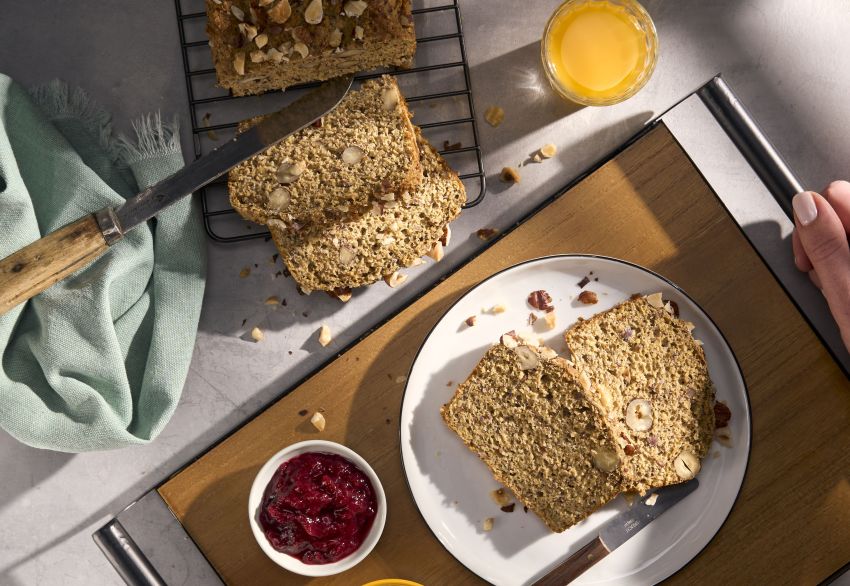 In its natural form,
In its natural form,
fibre is found almost exclusively in plant-based foods and mushrooms. Fruit and vegetables, nuts and seeds, and whole grains and wholegrain products are the most important sources of fibre.
Wholegrain products in particular are extremely important. The health benefits described above, especially the prevention of nutrition-related diseases, are mainly attributable to wholegrain products. (3)
The following table, which provides an outline of the different types of flour and their fibre content, reveals that the most widely used type of flour contains a comparatively low amount of fibre. Wholemeal flour contains almost four times as much.
Type of flour* | Fibre (g/100 g) | |
Wheat | Type 405 | 2.8 |
Ry | Type 815 | 6.5 |
Spelt | Type 630 | 3.7 |
*Types apply to Germany
Source: Ernährungs Umschau: “Ballaststoffe. Grundlagen – präventives Potenzial – Empfehlungen für die Lebensmittelauswahl” (Fibre. Basics – preventive potential – recommendations for food selection) by Petra Schulze-Lohmann | 7/2012
There are clear differences, especially with respect to bread. The comparison between a slice of bran crispbread and a croissant made of puff pastry is particularly interesting. Both contain – per slice or piece – 1.5 g of fibre, but in terms of energy the croissant has more than 11 times the calories. It is therefore important to look at the item of food in its entirety. We can eat a lot more crispbread, for example, and thus also consume a higher amount of fibre.
Bread type | Fibre | Energy | Fibre density |
1 slice of white bread (30 g) | 1.0 | 73 | 13.7 |
1 slice of mixed wheat bread (45 g) | 1.9 | 106 | 17.9 |
1 slice of mixed rye bread (45 g) | 2.8 | 101 | 27.2 |
1 slice of wholemeal wheat bread (50 g) | 3.7 | 102 | 36.3 |
1 slice of wholemeal rye bread (50 g) | 4.1 | 99 | 41.4 |
1 slice of pumpernickel bread (30 g) | 2.7 | 48 | 56.3 |
1 slice of bran crispbread (10 g) | 1.5 | 32 | 46.9 |
1 croissant, puff pastry (70 g) | 1.5 | 357 | 4.2 |
1 slice of crispbread containing milk (10 g) | 0.3 | 37 | 8.1 |
Source: Ernährungs Umschau: “Ballaststoffe. Grundlagen – präventives Potenzial – Empfehlungen für die Lebensmittelauswahl” (Fibre. Basics – preventive potential – recommendations for food selection) by Petra Schulze-Lohmann | 7/2012
Fruit and vegetables also differ distinctly. Especially good sources are pulses such as mung beans, soy beans, peas and lentils. Significant quantities can also be found in salsify, carrots, kale and fennel, however. With fruit, berries are certainly a good choice.
Vegetable | Fibre | Fruit | Fibre |
Salsify, cooked | 18.4 | Raspberries | 4.7 |
Mung beans, preserved | 18.0 | Kiwi fruit | 3.9 |
Soy beans, cooked | 10.0 | Redcurrants | 3.5 |
Peas, tinned | 6.6 | Rhubarb, cooked | 3.2 |
Lentils, cooked | 4.3 | Gooseberries | 3.0 |
Kale, cooked | 3.5 | Pears | 2.8 |
Carrots, raw | 3.0 | Oranges | 2.2 |
Fennel, raw | 2.2 | Strawberries | 2.0 |
Spinach, cooked | 2.1 | Bananas | 2.0 |
Bell pepper, raw | 2.0 | Apples | 2.0 |
Parstnips, raw | 2.0 | Mango | 1.7 |
Kohlrabi, cooked | 1.6 | Plums | 1.7 |
White asparagus, cooked | 1.5 | Grapes | 1.6 |
Tomatoes, raw | 1.2 | Pineapple | 1.4 |
Courgette, cooked | 1.2 | Grapefruit | 0.6 |
Iceberg lettuce | 1.0 | Watermelon | 0.2 |
Vegetable juice | 0.3 | Blackcurrant juice | 0.0 |
Source: Ernährungs Umschau: “Ballaststoffe. Grundlagen – präventives Potenzial – Empfehlungen für die Lebensmittelauswahl” (Fibre. Basics – preventive potential – recommendations for food selection) by Petra Schulze-Lohmann | 7/2012
Linseed, chia seeds and wheat bran are very popular ingredients with which to increase our fibre intake. However, since they are often viewed critically, I will add a little more detail here.
Linseed contains about 22 g of fibre per 100 g, but can absorb and accumulate significant levels of cadmium, a heavy metal, from the soil. The German Federal Office for Risk Assessment therefore recommends that no more than 20 g of flaxseed be consumed per day. (4) Linseed also contains natural ingredients (called cyanogenic glycosides) that can be converted into hydrocyanic acid. Consuming up to 15 g of linseed per meal is nevertheless considered safe by the BfR. (5)
According to the European Food Safety Authority (EFSA), chia seeds are harmless to the health if they have not been heat-treated at or above 120°C. At present, it is not possible to prove conclusively whether heat treatment leads to increased acrylamide levels. Since this may be the case, however, baked goods such as cakes may only contain up to 10% whole chia seeds and no chia seed flour. In bread, up to 5% whole or ground chia seeds is permitted. (6)
With 45 g of fibre per 100 g, wheat bran is a very good source of fibre. As it contains mostly insoluble fibre that swells considerably, it is essential to drink plenty of water when consuming wheat bran. Gastrointestinal symptoms can otherwise develop in the short term. As wheat bran contains phytate (a chemical form of phytic acid), no more than one to two tablespoons should be consumed per day. (2) Phytic acid occurs in plants as a storage form of phosphorus and binds various minerals that the plant requires for germination. For example, zinc, which is a very important mineral for us, is bound by phytic acid and thus can no longer be absorbed. (7) This is harmless with the daily amount mentioned, however. (2)
How to achieve the recommended intake
To ensure you get the recommended daily amount of at least 30 g of fibre, you should eat plenty of fruit and vegetables. This means about three handfuls of vegetables, including pulses, and two handfuls of fruit. A handful of fruit can also be substituted for nuts and seeds.
As already mentioned, fruit and vegetables vary in their fibre content. To consciously increase your fibre intake in this way, choose appropriate varieties (see table above).
The basic rule is, of course, that eating should be a pleasure. Anyone eating plenty of fruit and vegetables will most likely not only get sufficient fibre, but will also benefit from lots of important vitamins and minerals.
Adding wholegrain products is likewise important. And here I would like to mention once again that wholegrain products in particular have a very positive influence on our health and play an important role in preventing various diseases. Instead of eating products made of white flour, choose wholemeal alternatives or slowly get into this habit. Try wholemeal bread at breakfast or lunch, and simply replace your favourite pasta with a wholegrain alternative.
I would say just try it! In the case of pasta in particular, there are many varieties to choose from and they can vary considerably in taste. I also had to try different types until I found my favourites. I can highly recommend pasta made from pulses. My personal favourites are those made of red lentils or edamame beans.
In addition, wholemeal flour can also be gradually introduced into your baking. Fruit and sponge cakes with particularly strong flavours are especially suitable. But pancakes also turn out perfectly with wholemeal flour. With 100 g of wholemeal flour, you get 10 g of fibre per pancake. Especially for children who love something sweet, this is a good way to increase their fibre intake. (3)
Good to know! For anyone with coeliac disease who cannot eat products containing gluten, it is important to find alternatives that are rich in fibre. Hemp flour, guar gum flour, flaxseed flour, lupin flour, almond flour, chickpea flour, soya flour, red lentil flour, tiger nut flour and brown millet flour are particularly high in fibre, for example.
The following examples with our recipes give you an idea of a daily plan containing the recommended amount of at least 30 g of fibre:
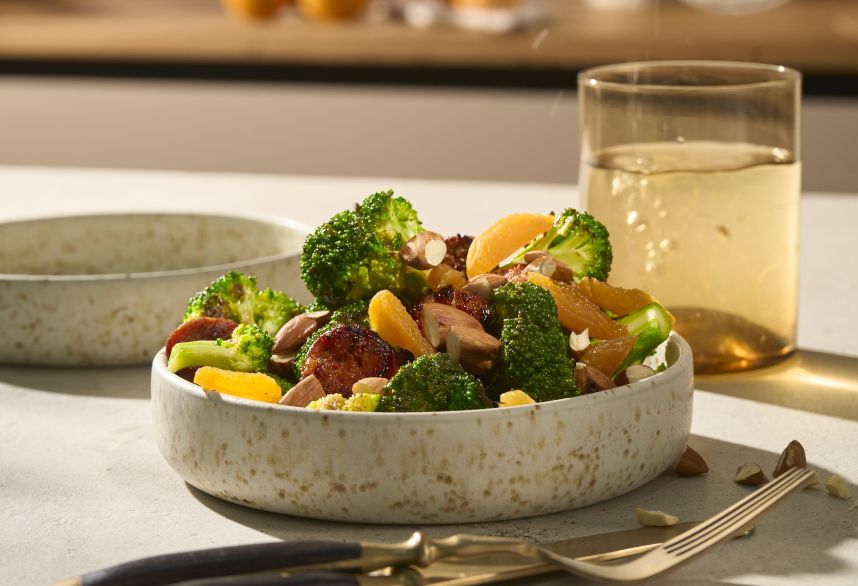
Option 1: Omnivorous diet
| Dish | Fibre per serving |
Breakfast | Oat granola with cinnamon | 4,6 g |
Lunch | 10 g | |
Evening meal | 17,1 g | |
Total |
| 36,4 g |
Option 2: Vegetarian
| Dish | Fibre per serving |
Breakfast | 9,1 g | |
Lunch | 14 g | |
Evening meal | 14,8 g | |
Total |
| 37,9 g |
Option 3: Vegan
| Dish | Fibre per serving |
Breakfast | 6,7 g | |
Lunch | 6,3 g | |
Evening meal | 15 g | |
Total |
| 36,9 g |
Remember: A diet rich in fibre that includes whole grains, fruit and vegetables not only has a positive effect on our digestion, but can also protect us from numerous diseases such as type 2 diabetes mellitus, high blood pressure, coronary heart disease and cancer.
Sources:
(1) Federal Ministry of Food, Agriculture and Consumer Protection, MRI: “Results Report Part 2. National Consumption Study II”
(2) Ernährungs Umschau: “Ballaststoffe. Grundlagen – präventives Potenzial – Empfehlungen für die Lebensmittelauswahl” (Fibre. Basics – preventive potential – recommendations for food selection) by Petra Schulze-Lohmann | 7/2012
(3) Ernährungs Umschau: “Ballaststoffe. Grundlagen – präventives Potenzial – Empfehlungen für die Lebensmittelauswahl” (Fibre. Basics – preventive potential – recommendations for food selection) by Petra Schulze-Lohmann | 7/2012
(4) BgVV: “Consumer tips on reducing the intake of undesirable substances with food”
(5) New data from BfR human study: No cyanide risk resulting from the consumption of marzipan and persipan Communication No. 006/2015
(6) European Food Safety Authority: “Safety of chia seeds (Salvia hispanica L.) subject to thermal processing in relation to the formation of process contaminants as a novel food for extended uses” (September 2020)
(7) German Nutrition Society: “Selected Questions and Answers on Zinc” (July 2019)
Images: © Shutterstock.com, Robert Bosch Hausgeräte GmbH





